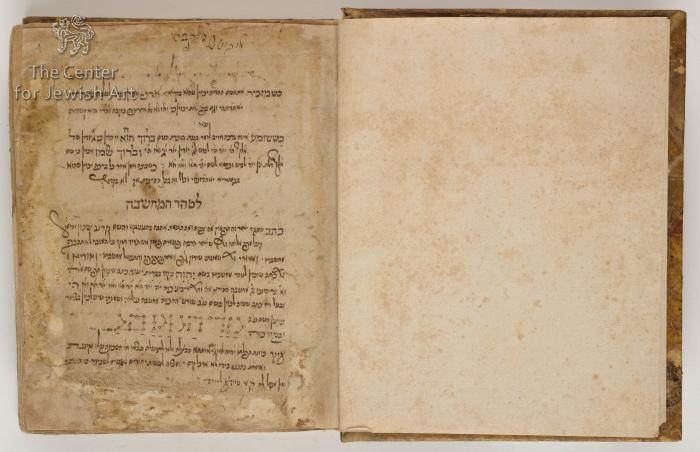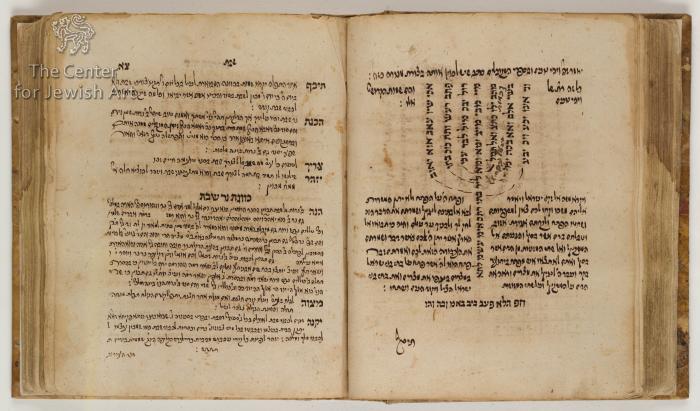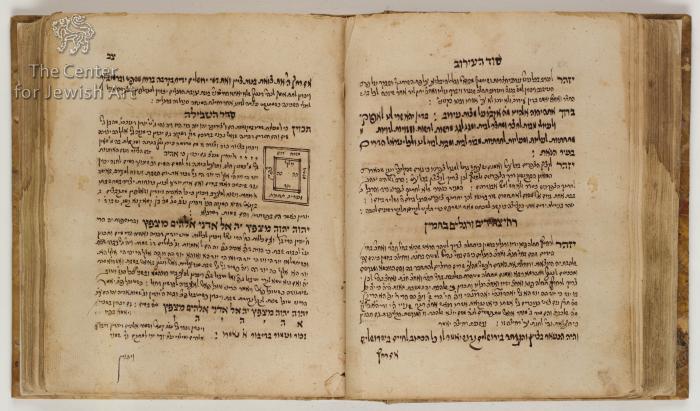Obj. ID: 53417 Rabbi Yitzhak ben Shlomo Luria, Siddur for the Whole Year by way of the Kabbalah of Ha'ari, Ukraine, circa 1750

© Gross Family Collection, Photographer: Unknown,
sub-set tree:
Name/Title
Rabbi Yitzhak ben Shlomo Luria, Siddur for the Whole Year by way of the Kabbalah of Ha'ari | Unknown
Object
Object Detail
Kabbalistic siddur
Date
circa 1750
Synagogue active dates
Reconstruction dates
Artist/ Maker
Unknown (Unknown)
Origin
Historical Origin
Unknown
Location
Unknown |
Site
Unknown
School/Style
Unknown|
Period
Period Detail
Gross Family Collection No.
EE.011.032
Category
Material/Technique
Paper, Ink, Written
Material Stucture
Material Decoration
Material Bonding
Material Inscription
Material Additions
Material Cloth
Material Lining
Tesserae Arrangement
Density
Colors
Construction material
Measurements
Height: 19.4 cm, Width: 16.2 cm, Depth: 3.9 cm
Height
Length
Width
Depth
Circumference
Thickness
Diameter
Weight
Axis
Panel Measurements
Hallmark
Iconographical Subject
Unknown |
Condition
Extant
Documented by CJA
Surveyed by CJA
Present Usage
Present Usage Details
Condition of Building Fabric
Architectural Significance type
Historical significance: Event/Period
Historical significance: Collective Memory/Folklore
Historical significance: Person
Architectural Significance: Style
Architectural Significance: Artistic Decoration
Urban significance
Significance Rating
Description
The following description was prepared by William Gross:
A beautifully written Kabbalistic siddur according to the Ha’ari, Included a prayer to be recited in front of the Kotel ha-Ma'aravi. This rare 18th-century siddur by way of the Kabbalah, is beautifully written and contains a few diagrams and illustrations inside. Such Kabbalistic prayer books were generally written by the person who used them for prayers. This example has signs of extensive use. The first printing of such Kabbalistic prayer books was at the end of the 18th century. Such well-written manuscripts of this type are very rare. They were principally used by Hassidic Jews.
Custom
Contents
Codicology
Scribes
Script
Number of Lines
Ruling
Pricking
Quires
Catchwords
Hebrew Numeration
Blank Leaves
Direction/Location
Façade (main)
Endivances
Location of Torah Ark
Location of Apse
Location of Niche
Location of Reader's Desk
Location of Platform
Temp: Architecture Axis
Arrangement of Seats
Location of Women's Section
Direction Prayer
Direction Toward Jerusalem
Signature
Colophon
Scribal Notes
Watermark
Binding
Decoration Program
Summary and Remarks
History/Provenance
Main Surveys & Excavations
Bibliography
Short Name
Full Name
Volume
Page
Type
Documenter
|
Researcher
|
Architectural Drawings
|
Computer Reconsdivuction
|
Section Head
|
Language Editor
|
Donor
|
Object Copyright
Gross Family Collection (GFC)





















